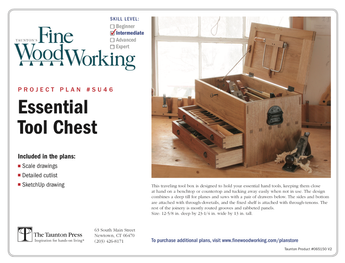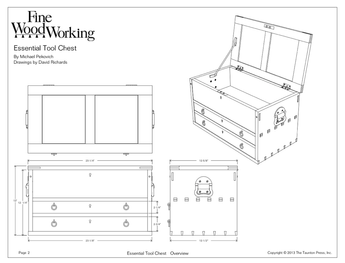Help cutting crown molding w/o miter saw
Hi,
I’m still a newbie and am taking my first crack at crown molding. I need to cut two outside corners for some molding to finish off a mantel. I don’t have a miter saw, just a tablesaw. I’ve searched the FW archives and can’t find anything about installing CM other than with a compound miter saw. Can I use my tablesaw to make the cuts, and if so, what’s the procedure? (Specifically, how do I determine the proper miter angles/coping angles… did I say it right?)
Thanks, Jeff
p.s.















Replies
Hi Jeff,
Over on WoodCentral, there is a compound miter Excel file:
http://www.woodcentral.com/bparticles/compound_miters.zip
Do note that the angles given while precise, require a perfect right-angle to make them work. Cut some scrap of the actual wood you are using to fine tune the angles.
Take care, Mike
Edited 7/14/2006 4:52 am by mwenz
If the crown lengths are short enough to safely handle on a table saw it can be done. I'll assume the spring angle is 38° ,a common crown spring angle. Make a jig that will hold the crown at the spring angle, the crown will sit on the jig upside down or rightside up depending on how you make the jig. Also the crown should pass the blade at 45- 1/2°. The extra 1/2° degree on each piece ensures the miter will be tight where it will be seen.In theory a gap will be at the back where it abuts the mantle, in reality it is almost invisible.
The jig itself can be a piece of mdf or plywood that either rides the fence or uses a miter slot. Two scrap pieces of lumber ripped to 38° and fastened at 45 1/2° on each side of the saw blade.
Before good mitersaws came on the market there were two ways to cut crown, by hand and a tablesaw.You will get as good or better fit with a tablesaw ,providing the lengths can be handles easily.
mike
There are two positions that you can hold crown molding when cutting miters on a table saw or a miter saw. One way is to hold the molding on the same angle that it will go on the wall. There are a couple of flat spots on the back of the crown that sit on the wall and ceiling, respectively. When cutting, one will be against the table top and one on the fence. In the case of a table saw, the fence will be an L shaped attached to your miter bar head. On a miter saw, the blade angles 45°, with the table saw, you angle the work, the blade stays perpendicular. With either saw, you hold the molding upside down, the bottom of the molding towards the top of the fence.
The other way to cut crown is done holding the crown flat to the table top. You still need to cut on an angle but it usually won't be 45°. You also need to bevel the blade. Both the angle and the bevel are determined by the the angle the molding sits on the wall. Another poster gave a web site with a calculator for the "spring" angles. For ordinary crown the angle is 31.6° with a bevel of 33.9°.
With both methods, you need to be able to go both right and left. You will have to compensate for the table saw only beveling in one direction if you use the flat/compound angle method. This may mean positioning the work with either edge on the miter head or repositioning the head from inside to outside. It's also very important to be able to hold the work accurately and to be able to repeat the same cut. Many make auxiliary fences, an L shape if cutting, standing upside down, and a straight fence for compound cuts. Once fixed to the miter head and cut through, they will tell you where the blade is cutting.
Some rental places have miter saws for rent. You can make a simple box for a hand saw. I'm sure you have seen them, basically a U box with cuts to guide the saw. When we install the real fancy crowns, this is the only way you can cut them due to their size. I also work a room clockwise. That way I am always making the same inside corner cut and cope until the last piece, which has to be coped on both ends. I don't have to change the saw set up much and I am always cutting in my favorite position. Of course, you can now go buy corner blocks for common crown and only have to worry about making a square (more or less) cut. It's also a good idea to cut your pieces about 3/8" long after cutting the corner. You will be able to get the piece in relative position to check the fit and still have some left to make a corrective cut, if needed.
Beat it to fit / Paint it to match
Here's one that works well if the molding isn't too wide.
http://www.magicmitre.co.uk/uk/
Try this link
http://www.compoundmiter.com/ I have the book and the angle finder it is excellent
Take it for a ride
Cecil
This forum post is now archived. Commenting has been disabled